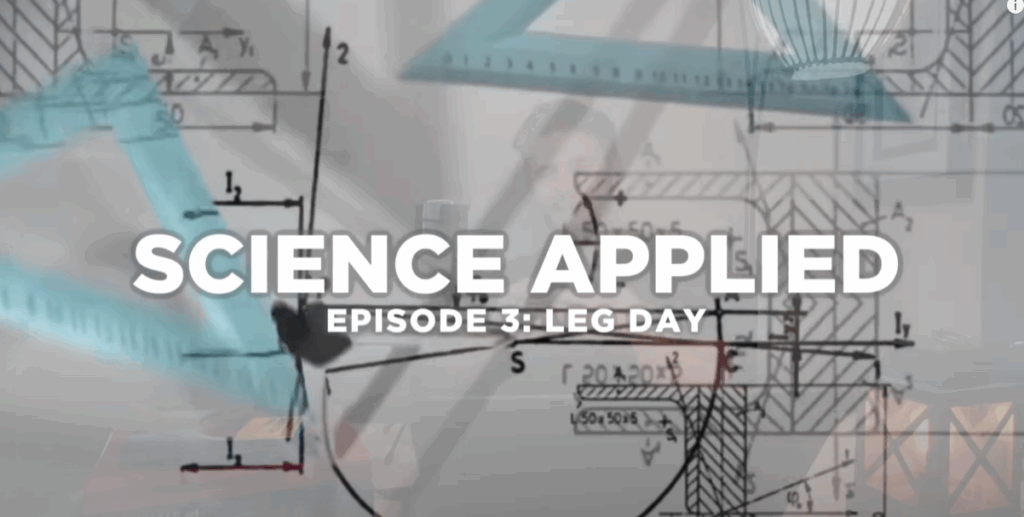If you’re serious about lower body development, then this science-based leg day is designed to maximize hypertrophy, balance, and performance while minimizing injury risk. Rather than just going through the motions, every exercise in this routine has a research-backed rationale. Here’s a full breakdown of the session and how each element contributes to building powerful legs.
Warm-Up: Prepare, Don’t Skip
Start with 5-10 minutes of light cardio on a machine like the elliptical. The goal here is to raise your core temperature, not exhaust yourself. Research shows that warming up before resistance training can improve performance and reduce injury risk. Follow that with dynamic stretching and light foam rolling focused on the hips, quads, hamstrings, and calves. Skip the static stretches and prioritize movements that mimic your lifts.

Exercise 1: Back Squats (3 sets of 4-6 reps)
This foundational lift targets your entire lower body, including quads, hamstrings, glutes, and lower back. Opt for a high-bar position if your goal is more quad development and less stress on the wrists and lower back. Low-bar squats tend to shift more emphasis to the posterior chain, especially glutes. The key is to choose the version that allows for a strong, comfortable setup.
Depth matters. Going below parallel activates both the quads and glutes more effectively, as shown in various EMG studies. However, don’t force depth beyond your mobility—stop just before your lower back begins to round (a phenomenon called “butt wink”). If mobility is a limiting factor, try elevated heel shoes or calf stretches.
Exercise 2: Romanian Deadlifts (3 sets of 8 reps)
Since squats under-train the hamstrings, Romanian deadlifts are added to target the posterior chain with an emphasis on hamstring stretch. Choose a weight that allows you to feel the tension through the hamstrings without your lower back or glutes taking over. A progressive overload strategy here could mean adding one rep each week while keeping the weight constant until you reach around 12 reps, then increase the load.
Optional: Walking Lunges (2-3 sets of 20 strides)
This functional exercise recruits all major leg muscles while challenging your balance and coordination. If you’re new to leg training, you may skip this to avoid redundant volume. Keep each step controlled, drive through your heel, and minimize push-off from the back foot to maximize glute and quad recruitment. Studies suggest walking lunges rival squats in activating the outer quad (vastus lateralis) and glutes.
Exercise 3: Single-Leg Leg Extensions (3 sets of 10 reps per leg)
Training each leg separately ensures balanced development and avoids dominance issues. Slightly pointing the toes inward can increase outer quad activation, but it’s a small difference. Focus instead on a slow, controlled contraction and ensure each quad gets equal attention.

Exercise 4: Single-Leg Lying Leg Curls (3 sets of 8+4 reps)
Another unilateral movement, this exercise targets hamstring imbalances and uses an advanced strategy: for the first 8 reps, point your toes down (plantarflexion) to limit calf involvement and force the hamstrings to work harder. Then switch to dorsiflexion (toes up) for the final 4 reps to squeeze out extra reps with the help of the calves. This mechanical drop set prolongs time under tension for more growth stimulus.
Exercise 5: Seated Calf Raise (3 sets of 20 reps)
Seated calf raises isolate the soleus muscle, which is crucial for lower leg density. Given its slow-twitch dominance, higher reps are ideal. Pause at the bottom of each rep to eliminate elastic rebound from the Achilles tendon and fully engage the muscle.

Exercise 6: Leg Press Calf Raise (3 sets of 10-12 reps per leg)
This move targets both major calf muscles and allows for greater loading than seated variations. Using a unilateral approach promotes balanced development. Execute each rep with a full range of motion, holding at the top and pausing at the bottom to ensure muscle-driven movement.
Final Thoughts
This comprehensive lower body session hits every major muscle group through a blend of compound and isolation lifts. It combines high-load strength training with intelligent volume and thoughtful progression. Whether you’re a bodybuilder seeking growth or a performance athlete looking to strengthen weak links, this workout delivers a complete leg day blueprint backed by science. Stick with it, track your progress, and adjust as needed for continued results.



